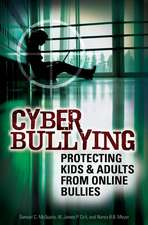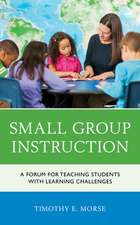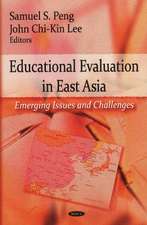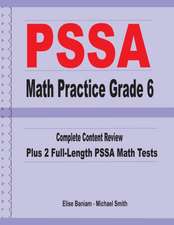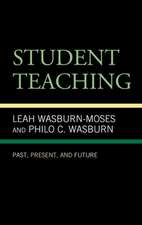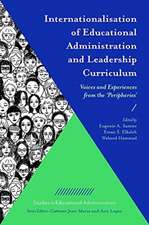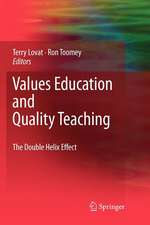Visible Learning for Social Studies, Grades K-12: Designing Student Learning for Conceptual Understanding: Corwin Teaching Essentials
Autor John Hattie, Julie Stern, Douglas Fisher, Nancy Freyen Limba Engleză Paperback – 7 iul 2020
Help students move from surface-level learning to the transfer of understanding.
How do social studies teachers maximize instruction to ensure students are prepared for an informed civic life? This book shows how the field is more than simply memorizing dates and facts¿it encapsulates the skillful ability to conduct investigations, analyze sources, place events in historical context, and synthesize divergent points of view. Best practices for applying visible learning are presented through:
· A scaffolded approach including surface-level learning, deep learning, and transfer of learning
· Examples of strategies, lessons, and activities best suited for each level of learning
· Planning tools, rubrics, and templates to guide instruction
Din seria Corwin Teaching Essentials
-
 Preț: 245.65 lei
Preț: 245.65 lei -
 Preț: 282.10 lei
Preț: 282.10 lei -
 Preț: 247.32 lei
Preț: 247.32 lei -
 Preț: 278.94 lei
Preț: 278.94 lei -
 Preț: 245.90 lei
Preț: 245.90 lei -
 Preț: 189.99 lei
Preț: 189.99 lei -
 Preț: 281.39 lei
Preț: 281.39 lei -
 Preț: 216.12 lei
Preț: 216.12 lei -
 Preț: 278.11 lei
Preț: 278.11 lei -
 Preț: 165.87 lei
Preț: 165.87 lei -
 Preț: 280.37 lei
Preț: 280.37 lei -
 Preț: 269.07 lei
Preț: 269.07 lei -
 Preț: 290.66 lei
Preț: 290.66 lei -
 Preț: 154.25 lei
Preț: 154.25 lei -
 Preț: 275.93 lei
Preț: 275.93 lei -
 Preț: 196.64 lei
Preț: 196.64 lei -
 Preț: 278.94 lei
Preț: 278.94 lei -
 Preț: 277.02 lei
Preț: 277.02 lei -
 Preț: 228.06 lei
Preț: 228.06 lei -
 Preț: 274.24 lei
Preț: 274.24 lei -
 Preț: 216.34 lei
Preț: 216.34 lei -
 Preț: 188.51 lei
Preț: 188.51 lei -
 Preț: 278.11 lei
Preț: 278.11 lei -
 Preț: 288.05 lei
Preț: 288.05 lei -
 Preț: 239.30 lei
Preț: 239.30 lei -
 Preț: 279.41 lei
Preț: 279.41 lei -
 Preț: 272.03 lei
Preț: 272.03 lei -
 Preț: 185.60 lei
Preț: 185.60 lei -
 Preț: 175.41 lei
Preț: 175.41 lei -
 Preț: 192.18 lei
Preț: 192.18 lei -
 Preț: 270.70 lei
Preț: 270.70 lei -
 Preț: 271.26 lei
Preț: 271.26 lei -
 Preț: 276.91 lei
Preț: 276.91 lei -
![Answers to Your Biggest Questions About Creating a Dynamic Classroom: Five to Thrive [series]](https://i3.books-express.ro/bs/9781071856789/answers-to-your-biggest-questions-about-creating-a-dynamic-classroom.jpg) Preț: 235.33 lei
Preț: 235.33 lei -
 Preț: 269.35 lei
Preț: 269.35 lei -
 Preț: 85.05 lei
Preț: 85.05 lei -
 Preț: 191.94 lei
Preț: 191.94 lei -
 Preț: 269.35 lei
Preț: 269.35 lei -
 Preț: 245.41 lei
Preț: 245.41 lei -
 Preț: 185.60 lei
Preț: 185.60 lei -
 Preț: 268.25 lei
Preț: 268.25 lei -
 Preț: 246.82 lei
Preț: 246.82 lei -
 Preț: 284.13 lei
Preț: 284.13 lei -
 Preț: 196.17 lei
Preț: 196.17 lei -
 Preț: 245.70 lei
Preț: 245.70 lei -
 Preț: 246.00 lei
Preț: 246.00 lei -
 Preț: 276.20 lei
Preț: 276.20 lei -
 Preț: 278.62 lei
Preț: 278.62 lei -
 Preț: 277.85 lei
Preț: 277.85 lei -
 Preț: 277.02 lei
Preț: 277.02 lei
Preț: 290.24 lei
Nou
55.55€ • 60.37$ • 46.70£
Carte disponibilă
Livrare economică 01-15 aprilie
Livrare express 15-21 martie pentru 31.19 lei
Specificații
ISBN-10: 1544380828
Pagini: 192
Dimensiuni: 187 x 232 x 14 mm
Greutate: 0.36 kg
Ediția:1
Editura: SAGE Publications
Colecția Corwin
Seria Corwin Teaching Essentials
Locul publicării:Thousand Oaks, United States
Recenzii
This book is a wonderful addition to any busy teacher or curriculum writer’s library. Meant for K-12, it is easy to read and implementable at any point in the year. The strategies provided teach students to utilize their background knowledge but dare to think critically in unfamiliar situations.
Visible Learning for Social Studies will inspire teachers, guide curriculum coordinators and instructional coaches, and will help educators bring transfer and thinking back into the humanities classroom. This book will help humanities teaches rediscover the value of their subject and will revitalize their approach to designing learning.
This is that unicorn of education books; it combines compelling classroom stories with accessible, relevant information about the research undergirding the change ideas. It is rich with resources and tools that teachers can use to make immediate changes in their units, but more than that, it will inspire teachers to pursue their own change ideas and research as they work to create just and equitable classroom communities.
While most books on educational pedagogy focus on areas outside of social studies, Visible Learning for Social Studies takes John Hattie’s critical work and makes it accessible for social studies teachers. The authors provide a clear and practical guide to implementing the most effective, evidence-based teaching strategies that will engage your social studies students. This book is a must-read for social studies teachers of all grade levels.
Having a resource like this – with so many applicable strategies and examples – will assert a conversation around social studies education in my division. This resource aligns with our division’s goal of more rigorous and relevant assessment, paired with appropriate feedback.
Visible Learning for Social Studies is an instructional treasure trove for teachers of social studies. The authors offer practical, usable and specific instructional strategies that work best at the surface, deep and transfer phases of learning with examples from kindergarten to grade 12. In today’s world of mass media, social studies lessons must engage students in learning at deeper levels and help them develop a fluency in critical literacy skills. With that purpose, this book is a must-have, must-use text for all social studies teachers.
As a nationwide movement grows to provide greater support for K-12 social studies education, books like this provide first-hand, data-driven recommendations for how educators can enhance student learning in this space. If you are part of the effort to improve social studies education in this country, you should read this book.
Visible Learning for Social Studies is an essential addition to the learning library of all social studies educators who are looking to connect research-based best practices with the different ways we engage our students in learning. Best of all, the research is clearly connected to classroom-ready examples that give K-12 teachers the support they need to implement the ideas from the book in order to best support moving their student learning forward. I would highly recommend this book to social studies educators at all grade levels as it cleanly synthesizes decades of research into usable examples based on the different learning levels (surface, deep, and transfer), with support around understanding the importance of the research and the impact in your own classroom.
Cuprins
List of Videos
About the Authors
Acknowledgments
Chapter 1. Laying the Groundwork for VISIBLE LEARNING® for Social Studies
The Evidence Base
Noticing What Works
Learning From What Works
General Learning Practices
Conclusion
Chapter 2. Surface Learning in Social Studies
Why Surface Learning Is Essential
Surface Acquisition and Consolidation
Acquisition of Social Studies Learning Made Visible
Consolidation of Social Studies Learning Made Visible
Conclusion
Chapter 3. Deep Learning in Social Studies
Moving From Surface to Deep
Deep Acquisition and Deep Consolidation
Deep Acquisition of Social Studies Learning Made Visible
Deep Consolidation of Social Studies Learning Made Visible
Conclusion
Chapter 4. Teaching for Transfer in Social Studies
Moving From Deep Learning to Transfer
Types of Transfer: Near and Far
The Paths of Transfer: Low-Road Hugging and High-Road Bridging
Setting the Conditions for Transfer of Learning
Teaching Students to Organize Conceptual Knowledge
Teaching Students to Transform Conceptual Knowledge
Conclusion
Chapter 5. Determining Impact, Responding, and Knowing What Does Not Work
Determining Impact
Responding When There Is Insufficient Impact
Learning From What Doesn’t Work
Conclusion
References
Index
Notă biografică
Descriere
How do social studies teachers maximize instruction to ensure students are prepared for an informed civic life? This book shows how the field is more than simply memorizing dates and facts—it encapsulates the skillful ability to conduct investigations, analyze sources, place events in historical context, and synthesize divergent points of view. Best practices for applying visible learning are presented through:
· A scaffolded approach including surface-level learning, deep learning, and transfer of learning
· Examples of strategies, lessons, and activities best suited for each level of learning
· Planning tools, rubrics, and templates to guide instruction

